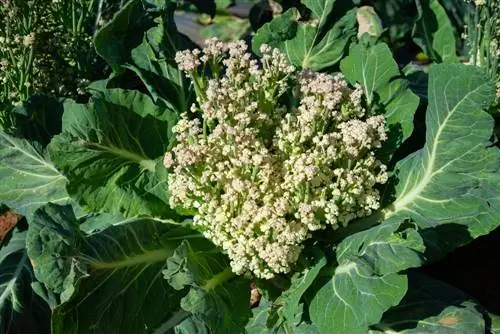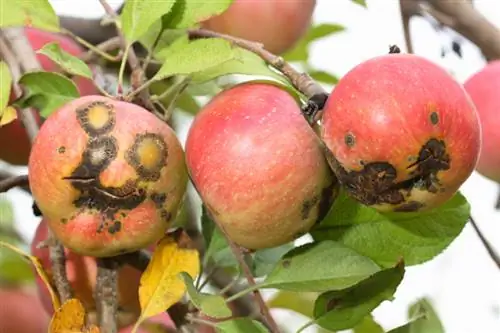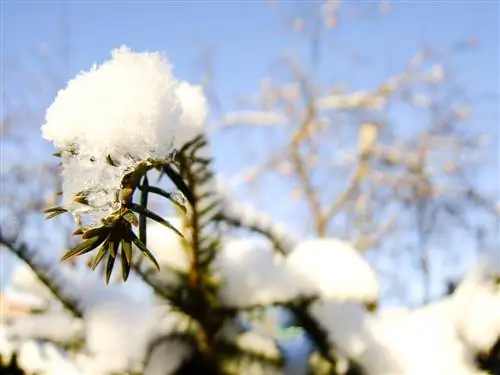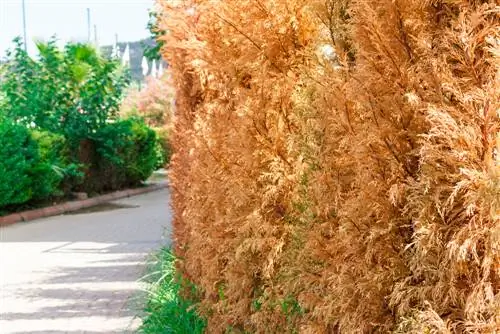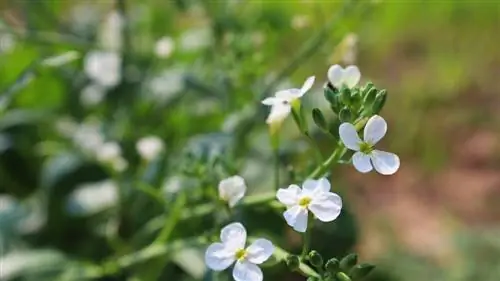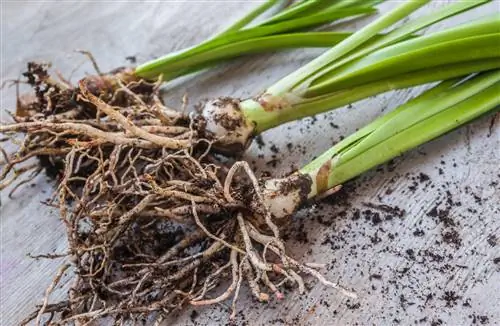- Author admin [email protected].
- Public 2023-12-16 16:46.
- Last modified 2025-01-23 11:22.
It is annoying when the culture in the garden begins to bloom prematurely. Shooting is a common problem in brassicas when the environment does not provide optimal conditions. It is therefore important that you choose the right location and pay attention to good care.
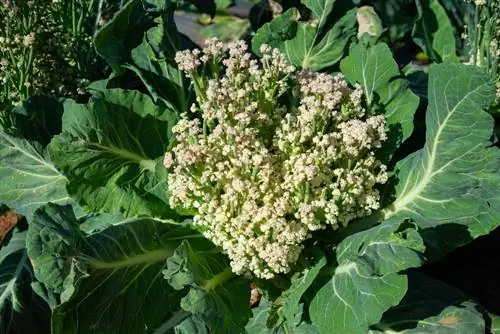
Why does cauliflower sprout and how to prevent it?
Cauliflower sprouts due to unfavorable conditions such as cold periods, inadequate irrigation, high nitrate levels in the soil or long dry periods. To prevent shooting, it is important to choose the right location, sufficient water and appropriate fertilization and to harvest the plants on time.
Growth
Cauliflower is a cultivated form of vegetable cabbage. In the first year, the plant develops an inflorescence consisting of fleshy, clustered flower shoots. Therefore cauliflower is a flowering vegetable. Over the course of the growing season, the compressed shoot stretches and flowers. The flower loses its consistency and becomes increasingly bitter as the stems become woody.
Why cauliflower shoots
In addition to a late harvest date, other factors could be the cause. If planting is done too early, the plants will be surprised by cold periods. These climatic conditions trigger premature flower development because the plants produce sufficient seeds before the supposed winter.
Other influencing factors:
- Irrigation is inadequate
- Nitrate content in the soil is too high
- many warm and dry days in a row
Claims
The vegetable cabbage values a sunny to partially shaded location, with six hours of sunshine a day being ideal. Avoid beds where excessive heat accumulates. Clubroots feel comfortable at a pH value between 6.0 and 7.0. Algae lime improves acidic substrates. Humous substrates that have a high water storage capacity increase yields. Medium-heavy soils are ideal. After the plants have grown, pile them up.
Cultivation
Protect the plants with black foil if you put them in the garden early. If the soil is too wet, you should wait before planting. Make sure there are at least 50 centimeters between them so that the heads can develop well. In spring it is advisable to hoe the bed regularly.
Watering and fertilizing
The flowering vegetables require a lot of water. Lack of water leads to the formation of small heads that sprout prematurely. With a layer of mulch you prevent the soil from drying out too quickly. Heavy eaters value a good supply of nutrients in the form of compost. Occasional doses of horn shavings (€12.00 on Amazon) ensure an even nutrient balance during the growing season. The right balance is crucial, as over-fertilization also leads to shooting.
Tip
A cold stimulus is required after the development of flowering plants. Temperatures between ten and 14 degrees ensure that a flower is formed that is ready to be harvested.
Harvest in time
The harvest period varies depending on the variety planted. The general rule is that cauliflower is fully ripe eight to twelve weeks after planting. This means that the harvest window extends from July to August and can extend into October for late breeding. You can harvest cauliflower when the flower is tightly closed. Do not cut off the leaves as they keep the head fresh and extend its shelf life.

